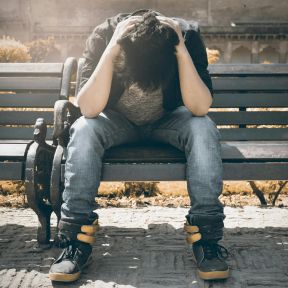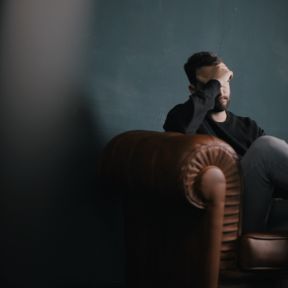
Anhedonia
Anhedonia is the inability to feel enjoyment or pleasure. People struggling with anhedonia aren’t motivated to seek out enjoyable activities like seeing friends or going for a walk, and they don’t enjoy them if they do. Anhedonia is a symptom of depressive disorders as well as some other mental health conditions, such as bipolar disorder and PTSD.
Contents

While hedonism is the pursuit of pleasure, gratification, and self-indulgence, anhedonia represents its absence—a lack of desire, enjoyment, or even conviction that anything matters.
Enjoyment encompasses both "wanting" and "liking"—anticipatory enjoyment, and present-moment pleasure. Ahedondia suppresses both facets. Not wanting to engage in positive activities prevents people from seeking them out, and not liking them prevents people from enjoying them if they do manage to seek them out. Experiences become muted, muffled, and miserably “meh.”
Although it doesn’t always rise to a clinical threshold, anhedonia is generally associated with depression, as well as some other mental health conditions including post-traumatic stress disorder, traumatic brain injury, schizophrenia, bipolar disorder, substance use disorder, Parkinson’s disease, and diabetes. Scientists don’t fully understand what causes anhedonia, but it may be linked to signaling changes in the brain, such as dopamine production.
Anhedonia can be categorized into two types. Social anhedonia describes the state in which spending time with people doesn’t elicit enjoyment, and physical anhedonia refers to the fact that physical experiences and sensations—getting a hug, listening to music, or the smell of freshly cooked food—don’t elicit enjoyment.
The experience of anhedonia tends to discourage people from engaging in activities they enjoy, leading to increased anhedonia and often depression. Over time, it’s possible to develop beliefs such as "Nothing is fun," or "Why do anything if I'm only going to be sad." But changing your actions can help change these entrenched beliefs. If someone who is depressed schedules an activity, and practices mindfulness and flexibility, they may be able to push back against anhedonia and find enjoyment in life.

Anhedonia can be difficult to treat, but it often involves addressing related mental health conditions, such as depression, with a combination of counseling and medication. Therapy may include cognitive behavioral therapy or other forms of talk therapy, and treatments may include medications, brain stimulation therapies, and newer approaches like psychedelic-assisted psychotherapy.
A few tips can help you push back against anhedonia. One is to make yourself do what you usually enjoy and value, even if you’re not in the mood. This takes effort; start with small steps, and eventually push yourself to schedule activities that make you leave the house, even if you don’t see the point. If you can’t think of anything that brings you joy, think about things that used to bring you joy, perhaps as a child. Oftentimes a change in behavior can change thoughts and feelings—even though we often think the pathway should be reversed.
Another practice is savoring. Anhedonia can lead you to discount small moments of joy or write them off as a waste of time if they don't make you feel better. Instead, use all five senses to notice the tiniest elements of joy, such as the smell of a fresh cookie, and savor them.
When life feels difficult, it can help to break overwhelming tasks into a series of small steps, reward any anticipatory excitement you feel, view setbacks as life lessons, and recognize that rewards come with time. These strategies can help you seek out enjoyable activities even if you’re feeling low.
If you’re feeling stronger, engaging in mindfulness, especially with sensory experiences, setting and meeting goals, maintaining close relationships, and exploring your sense of purpose can boost well-being as well.










